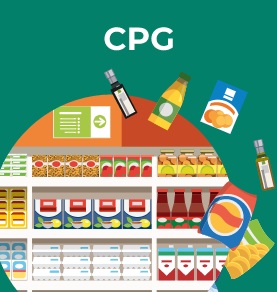How Important is Consumer Convenience in Retail

By Vaishnavi gupta , Assistant Editor
15 Jul 2022 | 7 min read
In the last two years of Covid, the way a brand would reach out to a customer and look at how it can make the product at his/her availability through convenience has changed many models, whether it is online, offline, D2C, or any other format. The unusual shopping patterns are emerging, considering that the societal trends related to how we work, how we learn, and how we use technology are rapidly changing. Internet penetration is increasing worldwide; likewise, the demand for retail stores to get their products on e-commerce platforms is also increasing.
At IReC 2022, various retailers, who have actually gone forward and experimented with the omnichannel format, have shared different strategies for customer convenience.
Consumer Convenience: New Strategies Adopted by Retailers
Offering Exchange Option to Consumers
There were a lot of weddings that got canceled due to the pandemic. SOCH collected the consumer data who shopped with the brand and sent them a message that if they want to exchange the items they have bought then they can. “Although our exchange policy is normally one week, even after three months of closure, we asked consumers if they want to exchange, they can. This move was appreciated by a lot of customers and they came and exchanged heavy pieces for things which they would wear ordinarily,” Manohar Chatlani, Owner, SOCH said.
Tweaking of Product Portfolio
During a pandemic, consumer preferences were changing and they were seeking different products. Since they were more home-bound, the products they needed were very different.
In a matter of three months, Zivame was able to tweak the product mix that it was carrying. At home, women demanded more loungewear products or needed more home-wear bras. The brand understood the need and launched an array of new products.
Similarly, WoodenStreet came up with innovation in the product as well. It has launched extendable study tables, where people can not only sit and work but, if they are tired of sitting, they can even stand and lift up tables and adjust them accordingly.
WhatsApp Selling
At the time when the stores were closed, Bluestone enabled selling over video calls on WhatsApp to make sure that it is staying in touch with the customers and that any shopping requirements that they have can be fulfilled without any physical touch. “Earlier, we were focusing on ‘try at home’, where our team would actually go to people's houses and then show them jewelry. That whole model was almost reversed due to the pandemic and we started serving the same customers through video,” Gaurav Kushwaha, Founder & CEO, Bluestone stated.
Pandemic Induced Boom in E-Commerce
Over the last two years, a series of lockdowns and social distancing norms have caused a bit of disruption to the Indian retail sector and driven an increase in e-commerce transactions. With no access to physical markets, people were left with little option but to use online platforms to make purchases, and online purchasing emerged as a lifeline for both retailers as well as consumers.
Ethnic wear brand SOCH, which has 148 offline stores currently, has said that e-commerce used to contribute half a percent of its annual sales pre-pandemic. But Covid has changed the scenario for the brand and it observed growth in the e-commerce business. “The e-commerce business currently contributes 8 percent of our total turnover. We expect it to go up to 20 percent of our turnover in the coming years,” Chatlani asserted.
95 percent of WoodenStreet’s customer acquisition happens through the website. The brand presently has 65 experience stores in major cities across India. “Post Covid, the consumer behavior changed and they wanted products in a shorter delivery timeline. Therefore, we have created a limited catalog of the products that can be delivered in the next 24 hours. This is solving a purpose where we have a ready catalog where people can choose from and get it delivered shortly,” Lokendra Singh Ranawat, Co-Founder & CEO, WoodenStreet asserted.
Best Solution for Retailers to Gain More Traction
Location-Based Marketing: It can smooth out the experience between the seller and the consumer. “The technology will help for sure because if you are able to deliver information about a product or advertise marketing campaign based on historical purchases; this will improve the experience at the store and helps a lot in the turnover. I really believe the location-based market is a great solution to enhance a customer experience for companies,” Alessandro Nardiello, Head of Sales, beaconsmind concluded.
In the last two years of Covid, the way a brand would reach out to a customer and look at how it can make the product at his/her availability through convenience has changed many models, whether it is online, offline, D2C, or any other format. The unusual shopping patterns are emerging, considering that the societal trends related to how we work, how we learn, and how we use technology are rapidly changing. Internet penetration is increasing worldwide; likewise, the demand for retail stores to get their products on e-commerce platforms is also increasing.
At IReC 2022, various retailers, who have actually gone forward and experimented with the omnichannel format, have shared different strategies for customer convenience.











